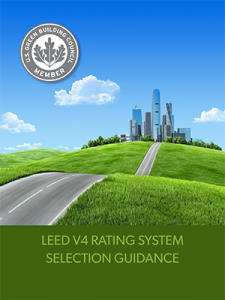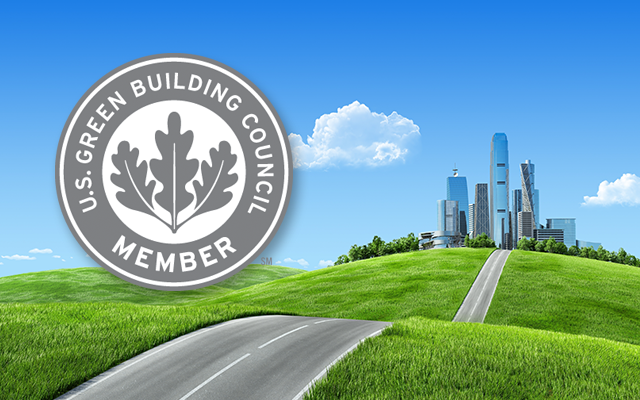A Look at LEED Certification
The push towards greener buildings has been gaining steam for decades. At this point, many people expect facilities to do their part to preserve the planet. While facility managers often understand the environmental and economic benefits of a sustainability plan, knowing where to start can be a challenge.
That’s where the U.S. Green Building Council’s Leadership in Energy and Environmental Design (LEED) program can help. As the most widely adopted third-party verification for green buildings, LEED serves as a framework for creating greener spaces in which to live and work.
LEED certification has been through several iterations and improvements in recent years, and the most recent is LEED v4. The flexible program allows you to earn points toward four different rating levels:
- LEED Certified: 40-49 points
- LEED Silver: 50-59 points
- LEED Gold: 60-79 points
- LEED Platinum: 80+ points
The LEED requirements are stringent, but they’re also fully supported with educational materials and are flexible enough that even the oldest, non-compliant buildings can usually achieve certification through a committed effort. Buildings pursuing LEED v4 certification must:
- Be in a permanent location on existing land. If your building is designed to move at any point, it doesn’t qualify for LEED.
- Use reasonable LEED boundaries. You must include all contiguous buildings, land, and other areas in the project. This means that you can’t leave out non-compliant parts of the building or outside areas such as landscaping, sidewalks, or parking lots in an effort to achieve certification.
- Comply with project size requirements. For Operations and Maintenance (O+M) certification this is a minimum of 1000 square feet of gross floor area.
LEED v4 has different phases and ratings systems to address the green development of buildings at every stage, from initial planning and construction of single homes to institutions, campuses, and even neighborhood developments.
You can view a full list of the LEED rating systems on the USGBC website here, but for most owners and managers of existing buildings, the O+M ratings system is most relevant. O+M is split into six different programs, each with its own requirements and available credits:
- O+M: Existing Buildings
- O+M: Data Centers
- O+M: Hospitality
- O+M: Retail
- O+M: Schools
- O+M: Warehouses and Distribution Centers
Whichever ratings system you choose, LEED will provide references and resources to create a path towards certification. You can earn prerequisites and points by making improvements to almost every part of the way you take care of and run your building. In the O+M stream, the focus is on very practical ways to improve the sustainability of your facility, especially:
- exterior building site maintenance programs
- water and energy use
- environmentally preferred products and practices for cleaning
- sustainable purchasing policies
- waste stream management
- ongoing indoor environmental quality
Clearly, cleaning practices are important in this process. In fact, putting together a green cleaning policy is a prerequisite for many O+M LEED credits. The specific standards for each credit are listed in the LEED credit library. The LEED Reference Guides for each rating system offer comprehensive information which will direct you and your team through the process.
LEED certification isn’t just for buildings. You can also personally earn a LEED Accredited Professional (AP) credential. As a LEED AP O+M expert, you’ll be equipped to streamline the certification process for your building. You’ll also have professional recognition of your ability to “implement sustainable practices, improve performance, heighten efficiency and reduce environmental impact in existing buildings through enhanced operations and maintenance.”
Sidebar: Five Steps to LEED Certification
- Choose your LEED rating system and purchase the corresponding reference guide.
- Register your project and pay the required fees.
- Begin working through and documenting the required changes.
- Submit your application to the Green Business Certification Inc. (GCBI) for review. GCBI conducts third-party technical reviews and verifications to ensure that participating buildings have completed all the requirements for LEED certification.
- Receive your certification decision.
[et_bloom_locked optin_id=”optin_3″]

As Promised
LEED v4 has different phases and ratings systems to address the green development of buildings at every stage. Yet, choosing the correct rating system is not always a simple process. Let this guide assist in your selection of the right LEEDs rating system.
[/et_bloom_locked]

